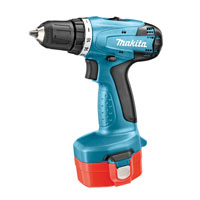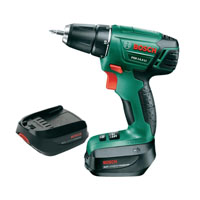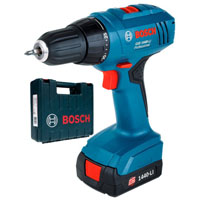 Some ten years ago, such a tool as a screwdriver was quite a rarity in tool sets. However, with the advent of new models, a decrease in the cost of producing this tool, screwdrivers have become quite affordable for most people. As they say, they have moved from the category of exotic to the category of a popular instrument.
Some ten years ago, such a tool as a screwdriver was quite a rarity in tool sets. However, with the advent of new models, a decrease in the cost of producing this tool, screwdrivers have become quite affordable for most people. As they say, they have moved from the category of exotic to the category of a popular instrument.
In the description of most online stores and manufacturers of this construction tool, the screwdriver is positioned as a drill - screwdriver. It's actually a marketing ploy.
The fact is that a modern screwdriver, in addition to the main function, namely, tightening fasteners in automatic mode, also has a drilling function. Many models are even equipped with a hammer drill function. With their help, you can easily drill through a brick wall and even concrete, of course, if you do not use a too thick drill, but it was originally designed specifically for tightening fasteners.
The main difference between a screwdriver and a classic electric drill is that it has a special switch with numbers that is responsible for adjusting the torque or, more precisely, the force with which the screw or self-tapping screw will be twisted. The internal mechanism is designed in such a way that it has practically no moment of inertia.
If you tighten, for example, a self-tapping screw using a conventional electric drill, then after you stop pressing the start button, the engine does not stop immediately, but makes some more revolutions, the screwdriver stops immediately. Because of this, with an electric drill without the appropriate experience, you will often “twist” the screws, or you can even burn the engine.
In addition, on a screwdriver, you can not think about the twisting force. You set the desired on the regulator and all the screws are twisted with one effort, which means that the fastener caps will not go into the material more than necessary. Upon reaching the desired tightening force, a protective mechanism is activated: a "ratchet" and further twisting is interrupted.
Since it is very often necessary to tighten the fasteners at a height and in the absence of stationary sources of electricity (sockets), most models of screwdrivers are produced in a stand-alone configuration - equipped with rechargeable batteries.
Compared to electric drills, the power of a screwdriver is less. After all, it is not intended for long-term drilling of hard thick materials. It should be noted that the maximum torque for which the screwdriver is designed does not depend too much on the power of the tool itself.
In this section, you can find information about various types of screwdrivers, both well-known brands and firms, and not so much. The articles provide information about all the technical characteristics of a particular model, its advantages and disadvantages, and advice on choosing this tool.
In order to go to the description of the screwdriver model, just click on the image above the name. All articles have links at the end of the description to return to the main section.
 |
 |
 |
|
|
screwdriver Bosch PSR 14.4 |
screwdriver Makita 6281 DWPE |
screwdriver Bosch GSR 1440-LI |
|
|
|
|||